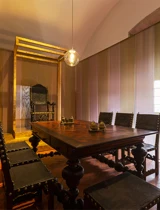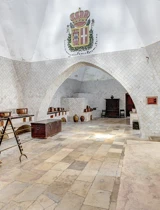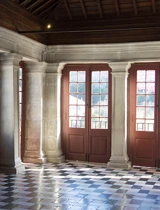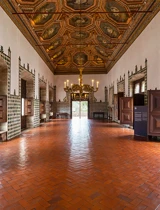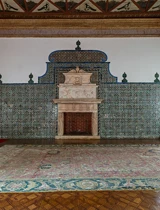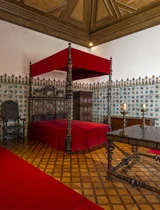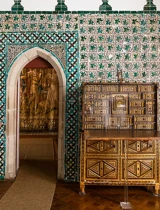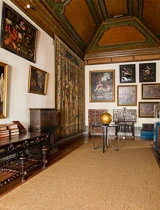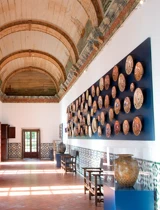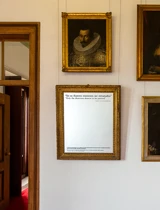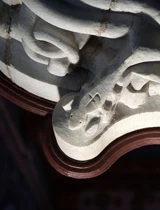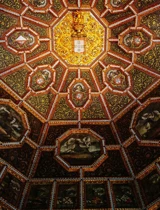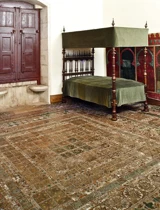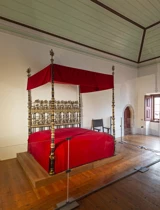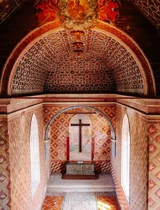
Anteroom of the Council
Chamber (known as the Arab Room)
Anteroom of the Council Chamber (known as the Arab Room)
Waiting room outside the judges’ or councillors’ meeting chamber.
It can be accessed directly from the Central Patio via a spiral staircase, and it
communicates with the royal chambers via the central door. It also provides
access to the chapel, through the north door.
The tiles and fountain date from the reign of King Manuel I (1495-1521),
but during the 19th century were believed to be from the Muslim period.
Discover the objects on display in this room.

Spiral Staircase
Through a spiral staircase, this room was connected to the Central Patio. At the top of the stairs, a small wrought iron dragon head with a half-opened mouth seems to guard the passage.

Fountain
A white marble basin stands in the middle of the room in a square of ceramic pieces in various colours. This fountain, which dates from the early 16th century, is surmounted by a group of sculptures from a later period featuring water-spouting mythological sea creatures.


